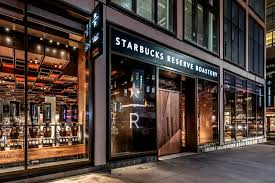Introduction
Starbucks has officially announced a change in its open-door policy for all company-owned stores, including Starbucks Reserve locations, across North America. Effective January 27, 2025, customers will now be required to make a purchase to use seating areas and restrooms, a significant shift from the open-access policy introduced in 2018. This move aims to enhance customer experience while addressing ongoing safety concerns.
Background of the Open-Door Policy

In 2018, Starbucks implemented an open-door policy, allowing anyone to use its spaces and facilities without the obligation to make a purchase. This decision followed a widely publicized incident in a Philadelphia Starbucks, where two Black men were arrested for loitering, sparking public outcry and accusations of racial discrimination (Business Insider). The open-door policy was intended to foster inclusivity and prevent such incidents in the future.
Why the Policy is Changing
While well-intentioned, the open-door policy resulted in unforeseen challenges. Starbucks employees reported numerous incidents involving disruptive behavior, loitering, and misuse of store facilities. In response to safety concerns, Starbucks closed 16 stores in various cities in 2022. The company’s decision to reverse the policy comes as part of an effort to create a safer and more comfortable environment for paying customers (AP News).
New Policy Guidelines
The revised policy outlines several key rules that customers must adhere to:
• Purchase Requirement: Only paying customers, or those accompanying them, may use restrooms and seating areas.
• Behavioral Expectations: Activities such as smoking, vaping, drug use, panhandling, and bringing outside alcohol are strictly prohibited (People).
• Enforcement: Starbucks plans to provide employees with training to enforce these rules effectively and ensure a welcoming environment. Law enforcement may be involved in cases of severe disruption.
Impact on Starbucks Reserve Locations

The updated policy also applies to Starbucks Reserve locations, which offer high-end coffee experiences and attract both tourists and regular customers. These flagship stores, known for their premium offerings and upscale environment, are expected to benefit from the policy, ensuring that facilities are reserved for patrons seeking a quality experience (AP News).
Mixed Reactions from the Public
The policy reversal has sparked mixed reactions. Supporters argue that prioritizing paying customers will improve the overall store atmosphere, while critics worry about the impact on marginalized individuals who may rely on Starbucks’ facilities without making a purchase. Despite the concerns, Starbucks maintains that the new rules are designed to promote safety and create a welcoming environment for its core clientele (Business Insider).
Conclusion
Starbucks’ decision to reverse its open-door policy reflects its commitment to balancing inclusivity with safety and customer satisfaction. As the new guidelines take effect, both employees and customers will need to adapt to the updated expectations, ensuring that Starbucks remains a welcoming yet well-regulated space for all.




